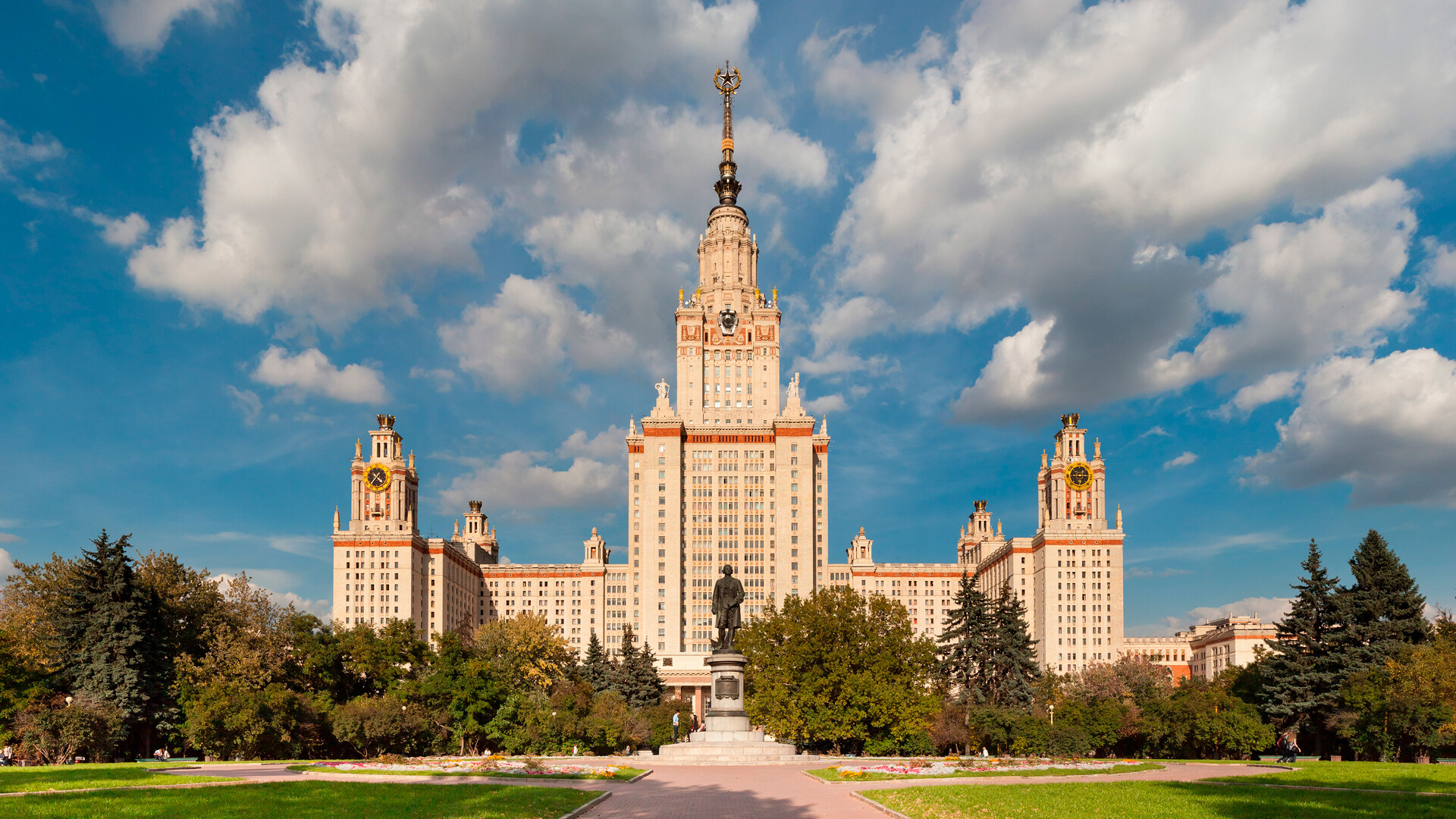
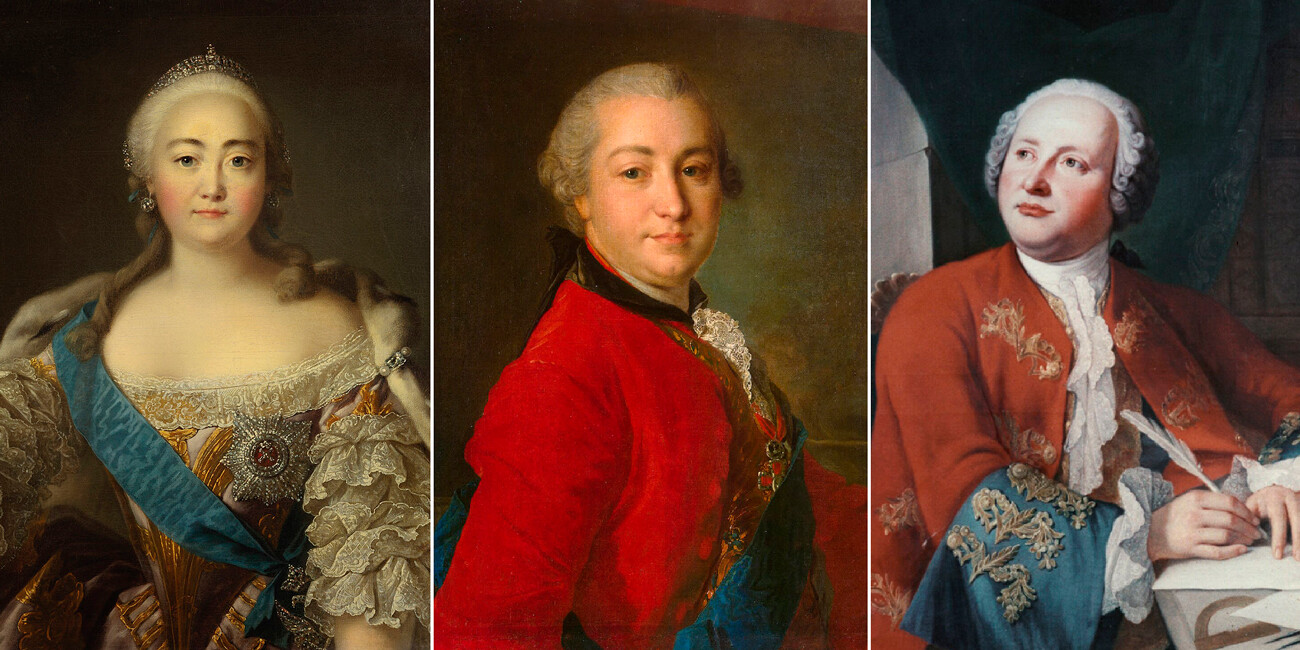
Empress Elizabeth of Russia; Ivan Shuvalov; Mikhail Lomonosov
Tretyakov Gallery; Hermitage; KunstkameraMoscow University was founded in 1755 at the order of Empress Elizaveta Petrovna. The education concept and the university project were prepared by first Russian academician Mikhail Lomonosov. However, MSU would be named after him only in 1940.
Lomonosov’s words, “science is a clear knowledge of the truth, enlightenment of the mind”, adorn the coat of arms of MSU today (The full quote from his book ‘Rhetoric’ goes as follows: “Science is a clear knowledge of the truth, enlightenment of the mind, immaculate entertainment of life, praise of youth, support of old age, builder of cities, regiments, the fortress of success in misery and decoration in happiness, everywhere a faithful and inseparable companion.”).
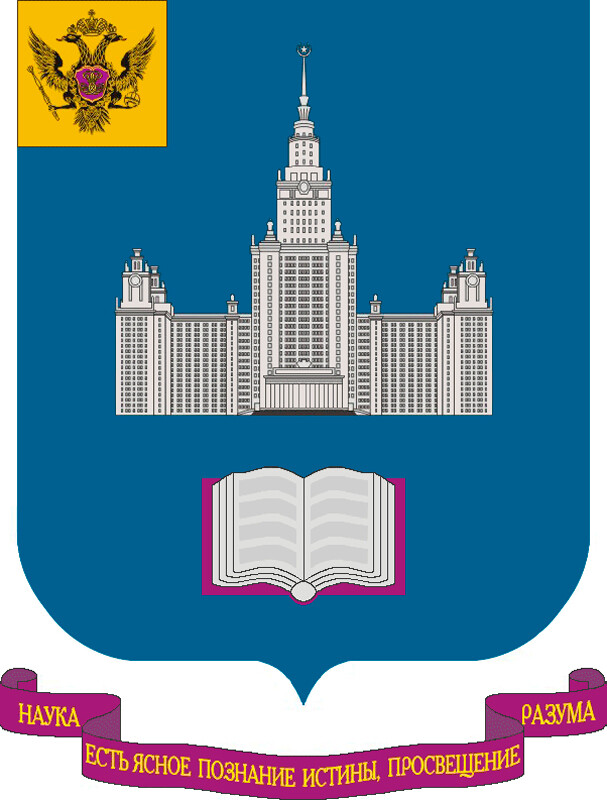
Moscow State University emblem
Public domainLomonosov student and Elizaveta’s favorite Ivan Shuvalov, who presented the project to the empress, promoted the idea of creating a university. He became the first curator of MSU.
January 25 is considered the birthday of the university, also known as ‘Tatiana Day’. Shuvalov timed it for the birthday of his mother. MSU also has a house church named after Martyr Tatiana.
Moscow University contests St. Petersburg State University’s claim to be the oldest (historians debate if the latter is the successor of the Academy of Sciences, founded by Peter the Great in 1724 or the reorganized Pedagogical University, founded in 1819).
And yet, MSU’s anthem says: “It’s ours! It’s the first! It’s Moscow University!”
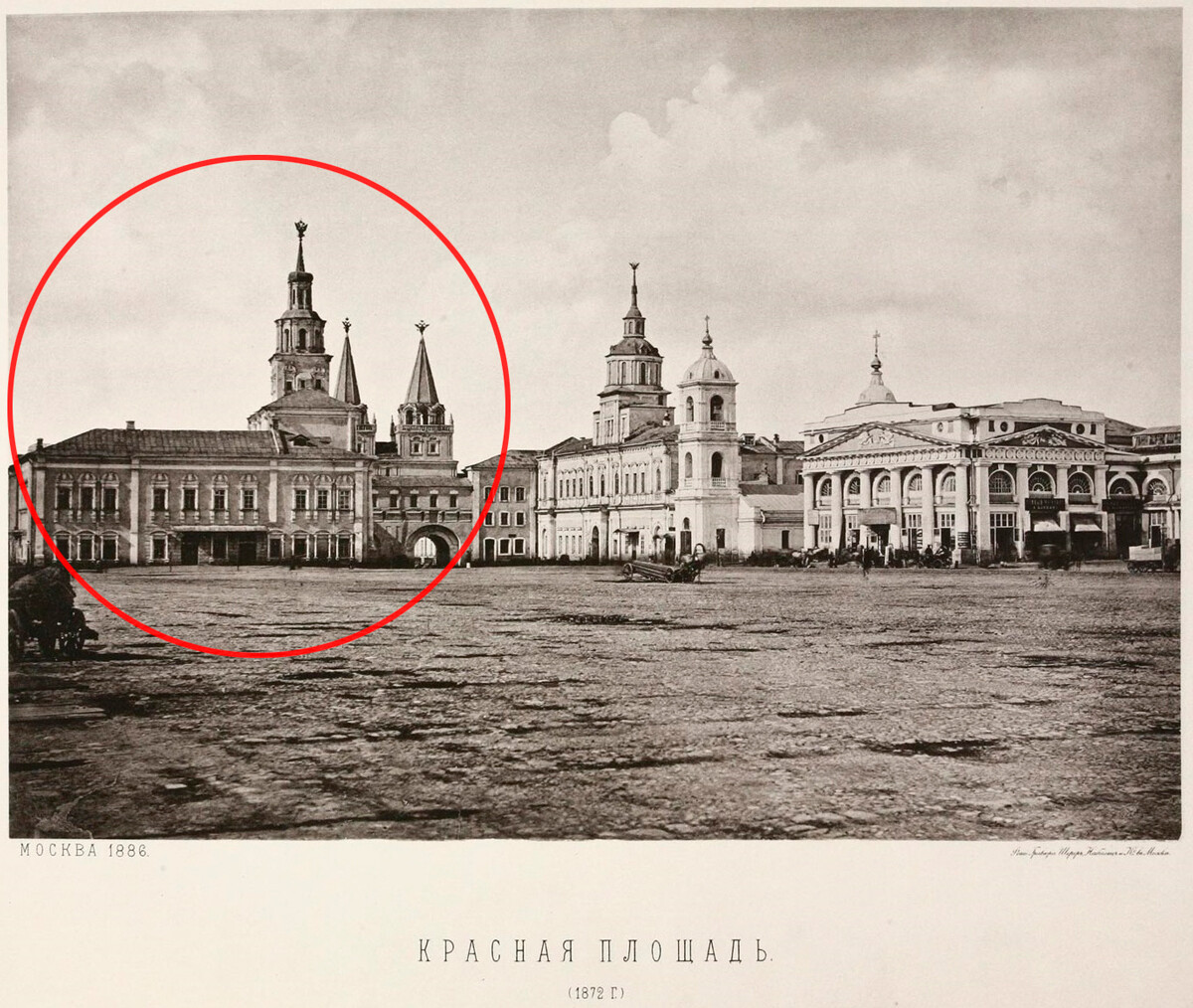
The building of 'Zemsky prikaz' on the Red Square, 1872
Ivan Alexandrov/Museum of MoscowThe first building of MSU didn’t survive – initially, the university was given the building of Zemsky prikaz (county council) on the Red Square (today, the Historical Museum occupies this space). This building didn’t meet the requirements of the new university – and, in the 1780s, a new building was erected for it on Mokhovaya Street, right across from the Kremlin.
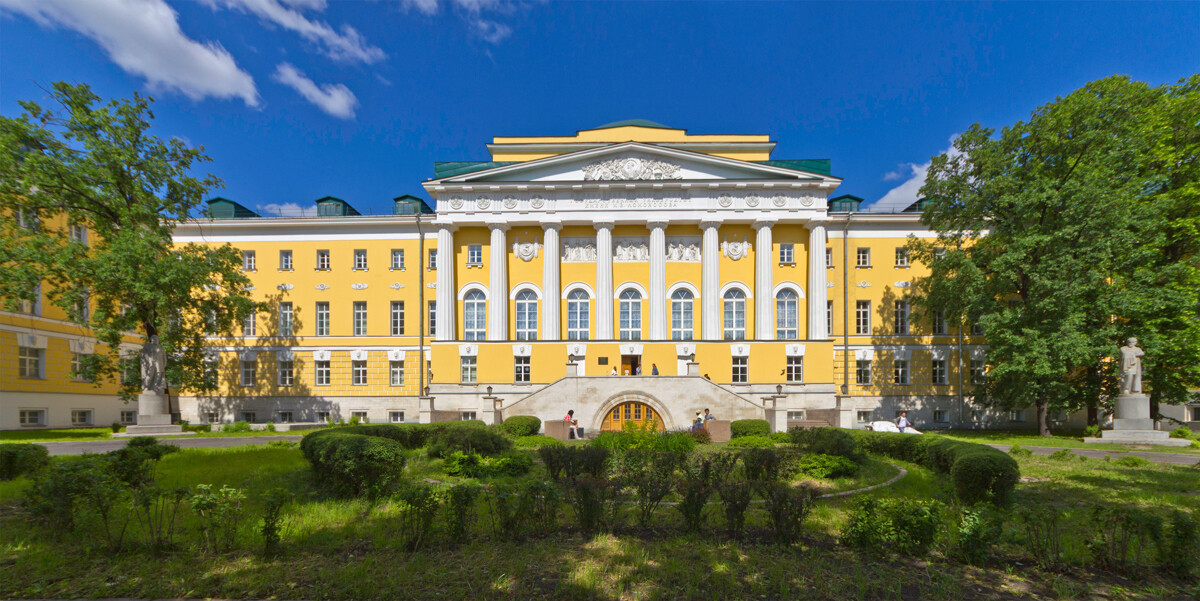
The oldest building of the university (now it hosts MSU’s Institute of Asian and African Studies)
A.Savin, WikiCommonsStudents still attend this oldest of the surviving buildings of the university at the address Mokhovaya Street, 11 – now it hosts MSU’s Institute of Asian and African Studies.
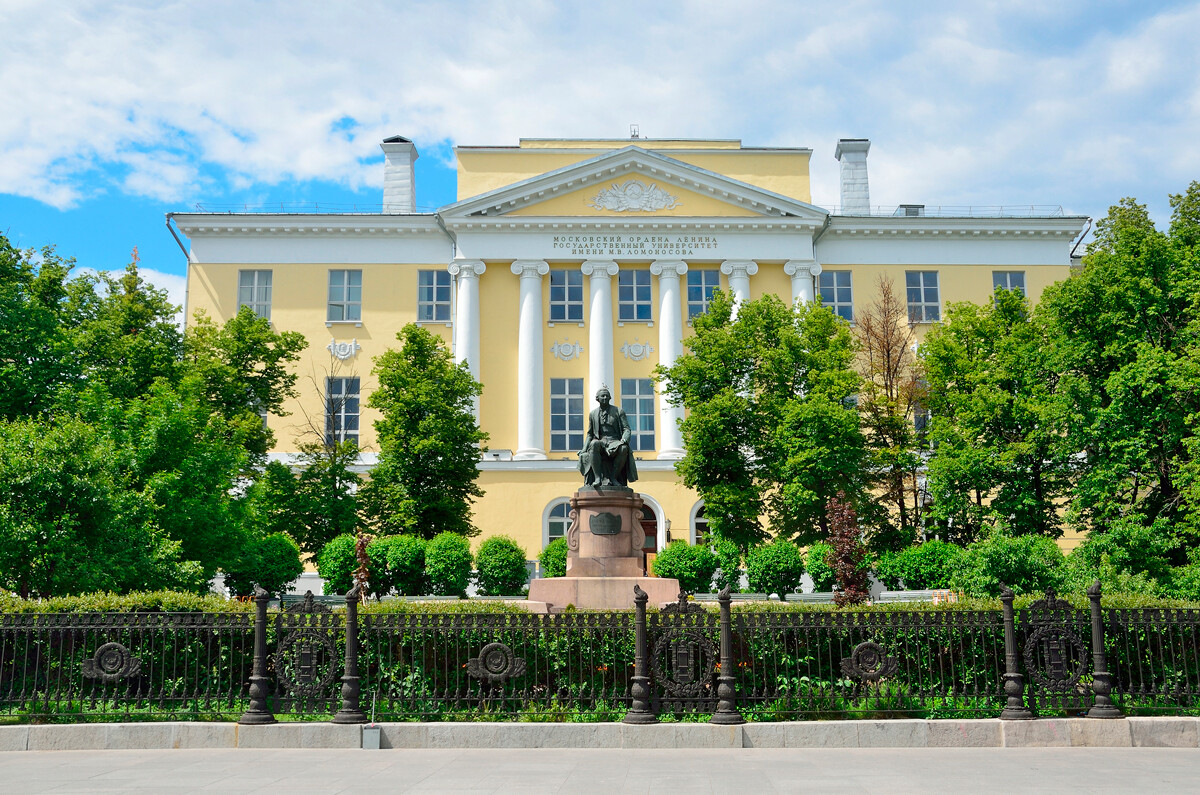
MSU’s Faculty of Journalism (with a monument to Mikhail Lomonosov in front of it)
Legion MediaIn the 1830s, for the university’s needs another building was bought out (built in 1790) across the road (now the address Mokhovaya, 9 is occupied by the MSU Faculty of Journalism), as well as the house church. Later, the university occupied the entire quarter – its own printing house appeared, as well as a scientific library and a zoological museum.
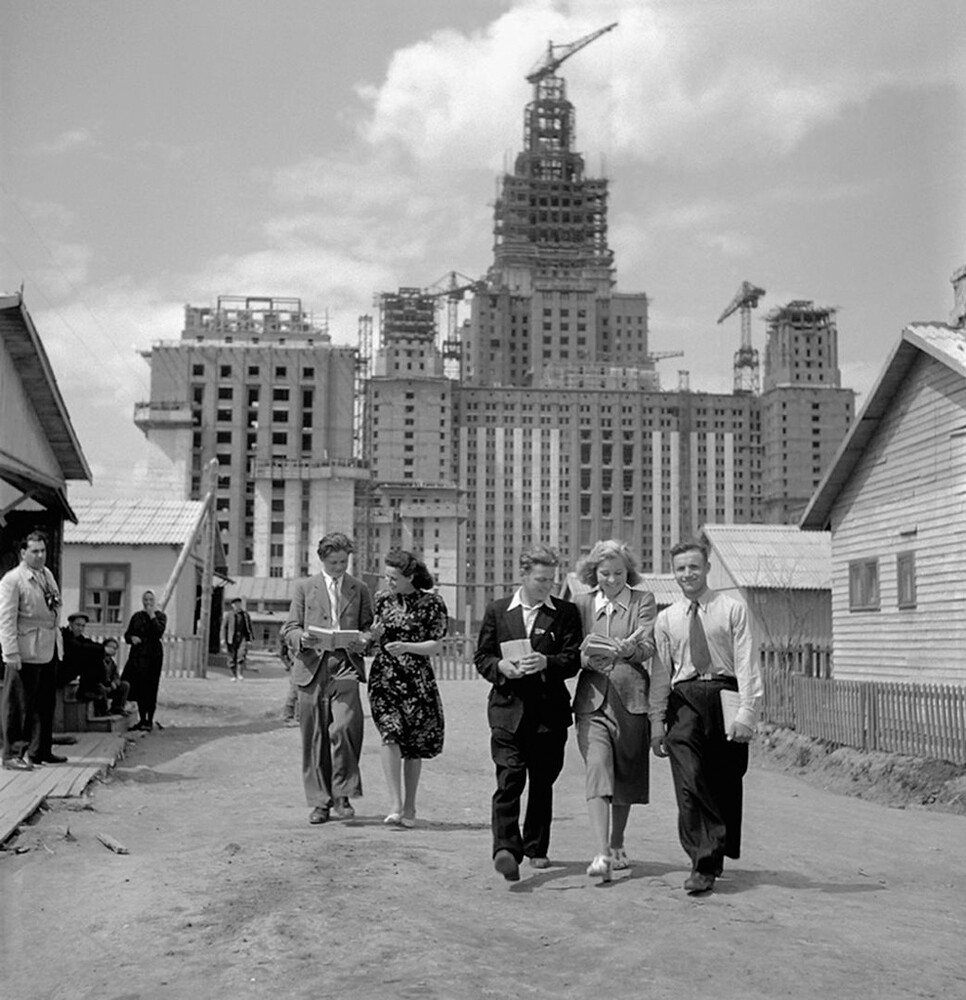
MSU main building under construction, 1951
Yevgeny Umnov/Union of Photo Artists of RussiaBefore the 1917 Revolution, education at Moscow State University was just for the elites – and, even then, only a very small circle of people could afford it. But, after the Revolution, the course was set for the democratization of education. The number of students rose sharply, a reorganization was undertaken and student self-governed bodies were created. The Higher Courses for Women also merged with MSU, for the first time allowing female students and also female professors. New faculties and areas of study appeared; small buildings in the center of the city couldn’t keep up with the main university of the country’s needs.
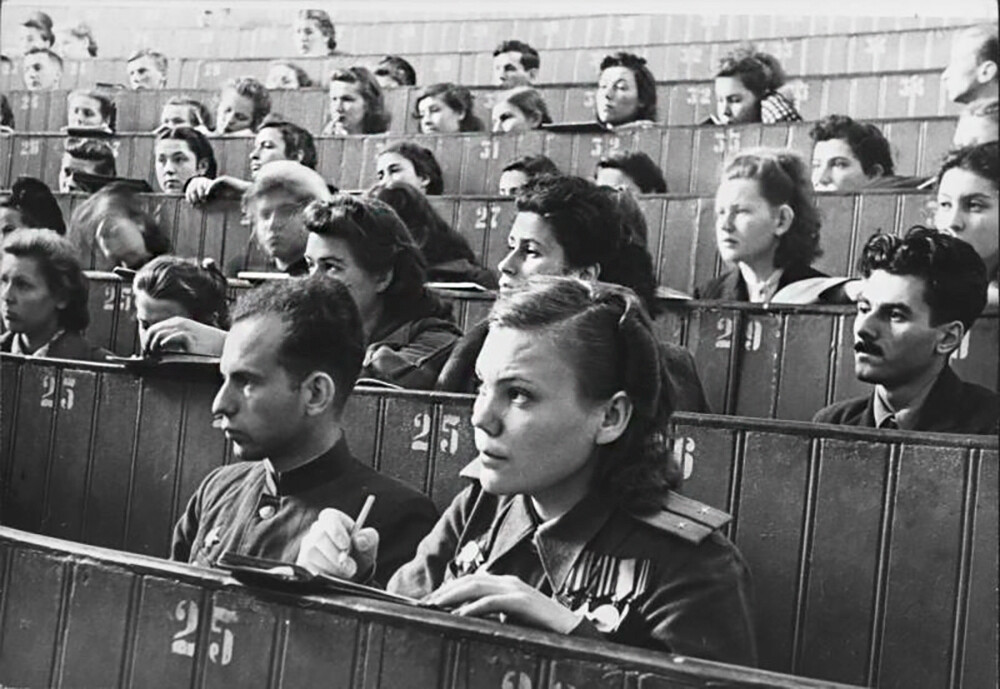
First lecture after the end of WWII. September 1, 1945
Emmanuil Yevzerikhin/MAMM/MDFAt the end of the 1940s, Stalin planned to build several high-rises in Moscow – initially, the high-rise on Lenin (‘Sparrow’) Hills on the bend of the Moscow River was supposed to be a hotel. But, the MSU administration pleaded so much for a new building that Stalin decided to give this building to the university. MSU ended up being the tallest of these buildings – its central building with the spire has 32 stories and is 239 meters tall (and it's the tallest educational building in the world).
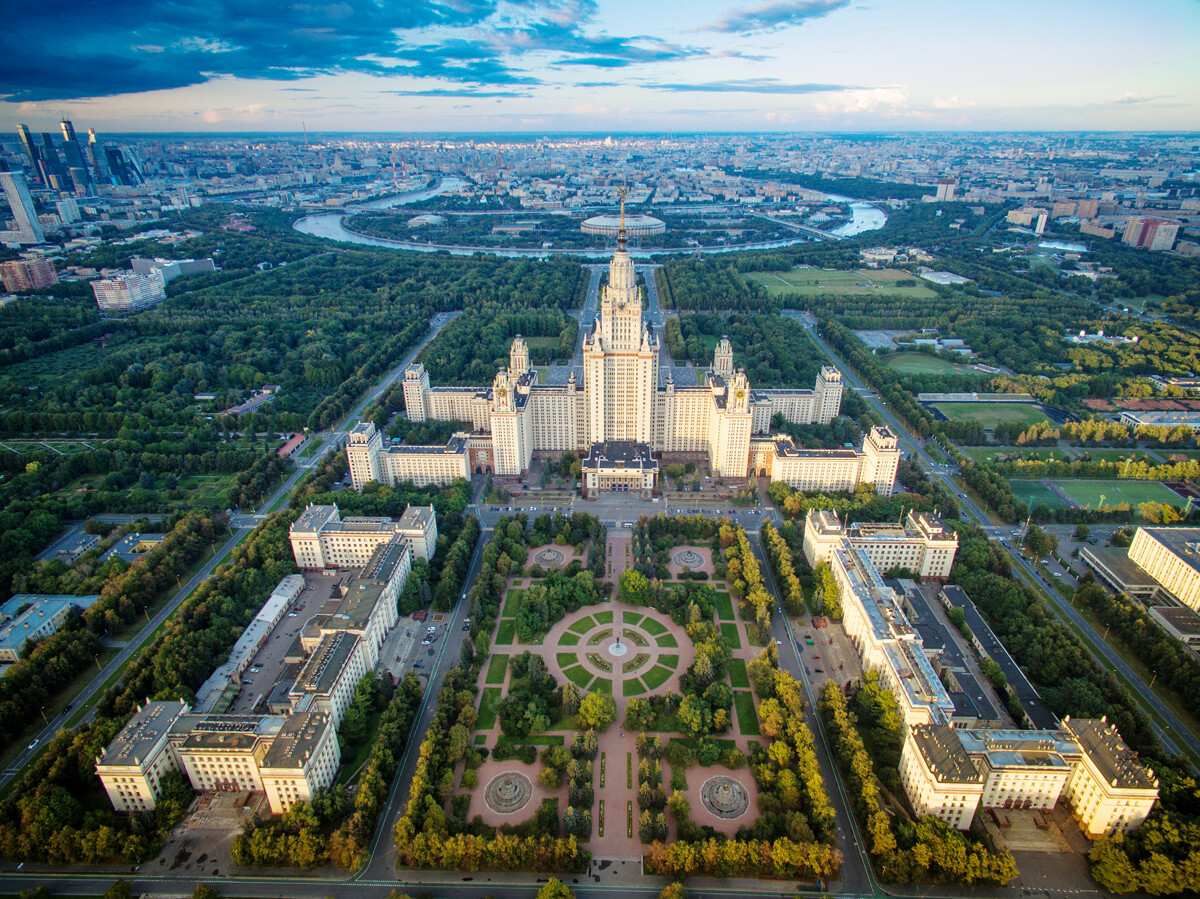
Main building of MSU and buildings of the Faculty of Chemistry (left) and Physics
Natalia Garnelis/TASSAt the same time, two buildings for the Faculties of Chemistry and Physics were erected next to the main one in the same style.
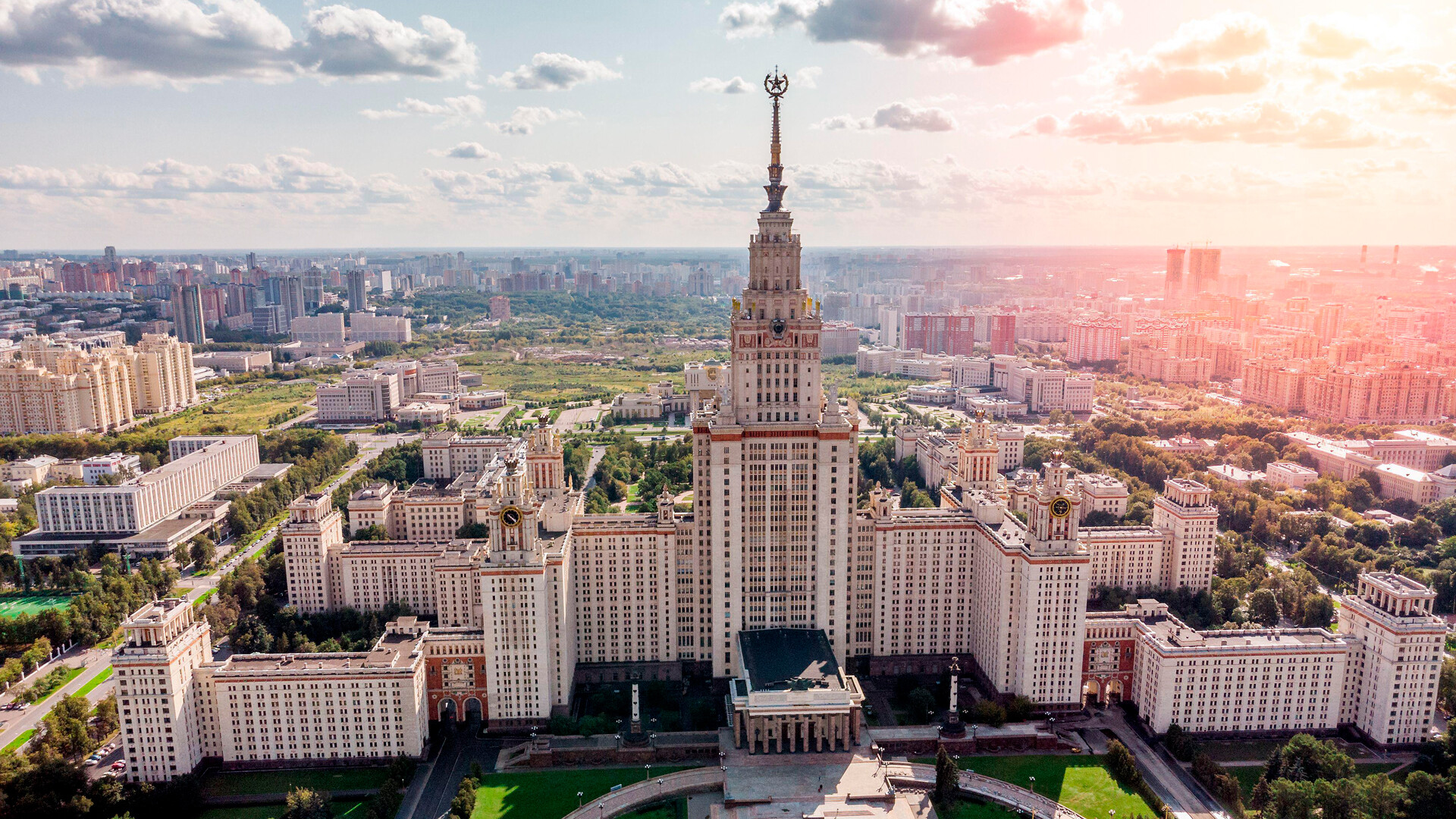
View on MSU main building from the Vorobyevy Gory
Legion MediaToday, MSU owns hundreds of buildings across Moscow and beyond. The area of just the main campus is hundreds of hectares.
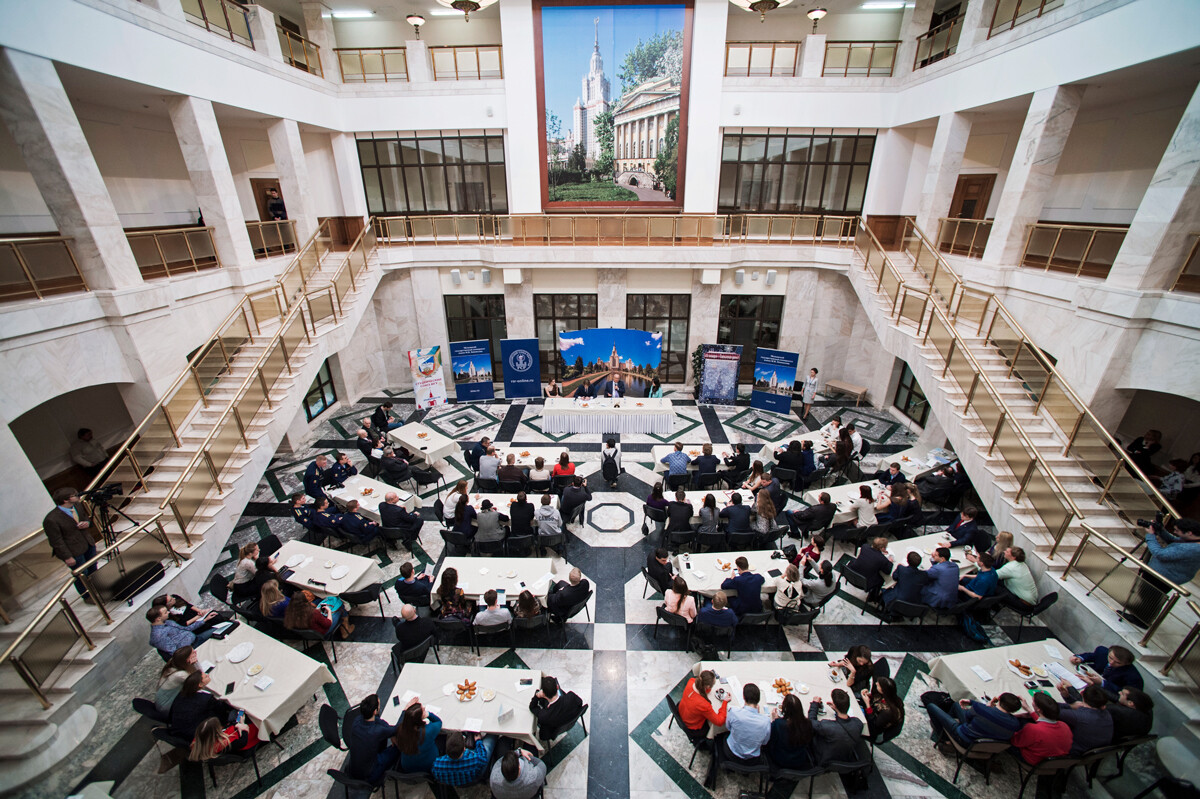
The building of the new MSU Fundamental Library (opened in 2005)
Yevgeny Biyatov/SputnikAside from a range of buildings in the middle of the city and more than ten educational buildings on Sparrow Hills, MSU owns several libraries, research centers and laboratories, its own printing house, a botanical garden, several museums, a track and field arena, as well as soccer fields and tennis courts and much, much more.
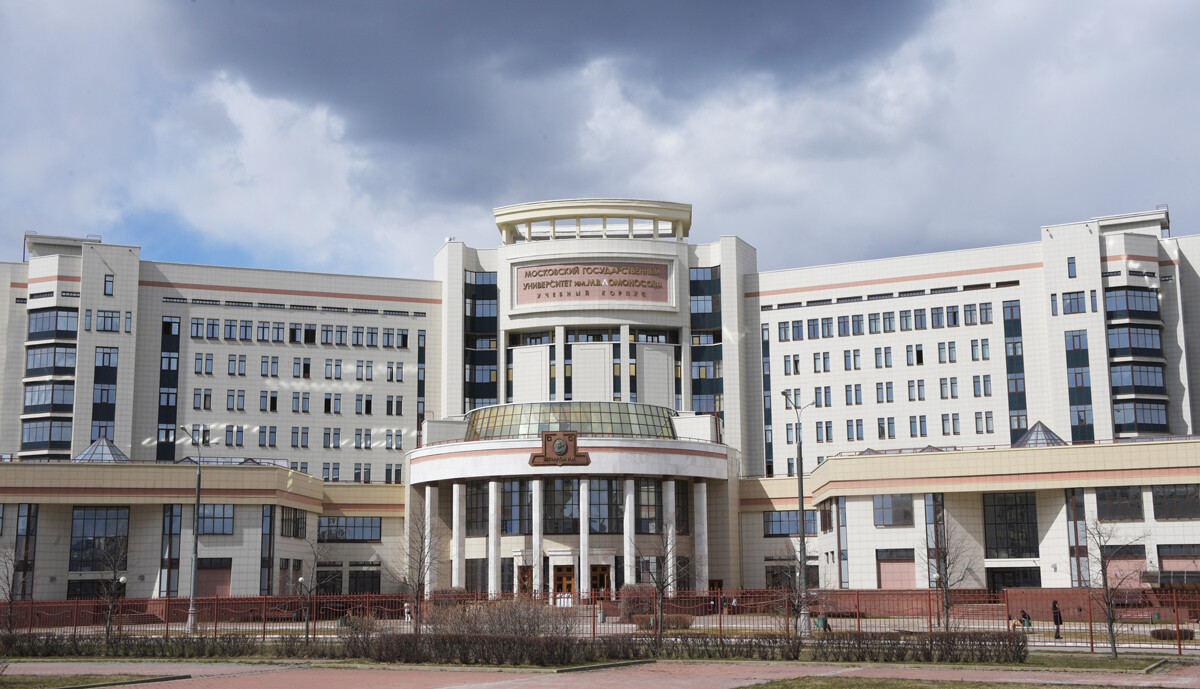
The Shuvalov academic buildings of MSU (opened in 2007)
Vladimir Fedorenko/SputnikIt even has its own clinic, meteorological observatory and its own nuclear center.
In addition to the faculties, MSU also has more than 300 departments and seven branches in other countries (among them former USSR republics and Slovenia).
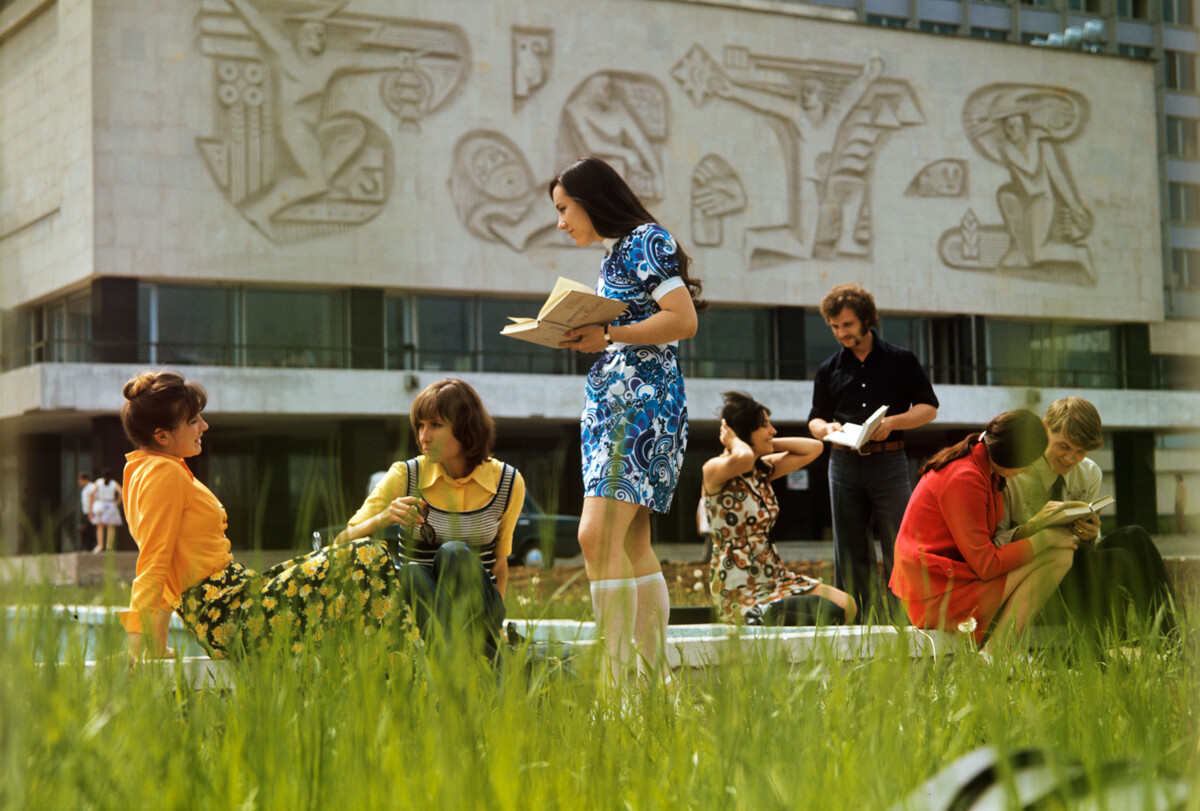
Students in front of the first Humanities Building, 1975
Vladimir Vyatkin/SputnikInitially, in 1755, the university had only three faculties – the Faculty of Philosophy, Faculty of Law and Faculty of Medicine. In the 19th century, they were joined by the departments of physical and mathematical sciences, as well as philological departments. After the 1917 Revolution, it was reorganized and new faculties of fundamental sciences appeared: the faculties of Chemistry, Biology, Mechanics and Mathematics, Physics, History, Geology, Geography, Philology and Economics.
In 1952, the Faculty of Journalism branched off the Faculty of Philology and, in 1973, the Faculty of Soil Science branched off the Faculty of Biology. Also, the faculties of Psychology, Computational Mathematics and Cybernetics and the Institute of Asian and African Studies appeared.
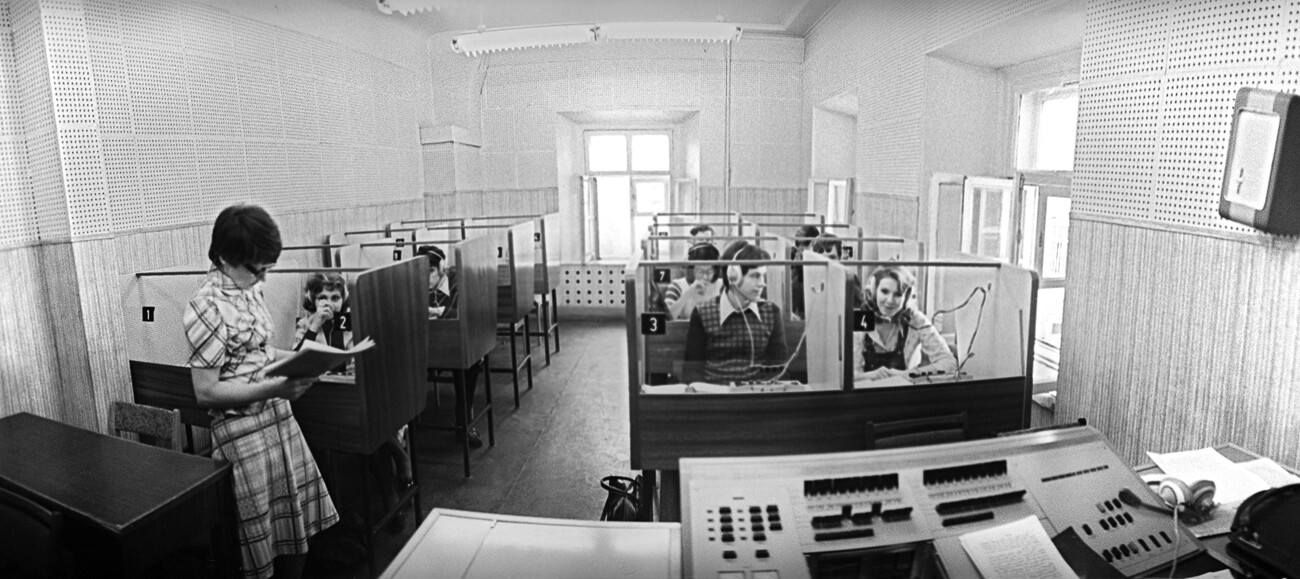
Lesson in the lingaphone classroom at the MSU Institute of Asian and African Studies, 1978
Vitaly Saveliev/SputnikIn the 1980s-1990s, separate faculties were allocated for such sciences as sociology, foreign languages and area studies, materials science, fundamental medicine, public administration and military education. Today, MSU also teaches bioengineering, global politics, public administration, business, television, humanitarian management among many other options.
Aside from that, MSU has its own educational center for high school students, whose priority is the preparation for enrolling at the university.
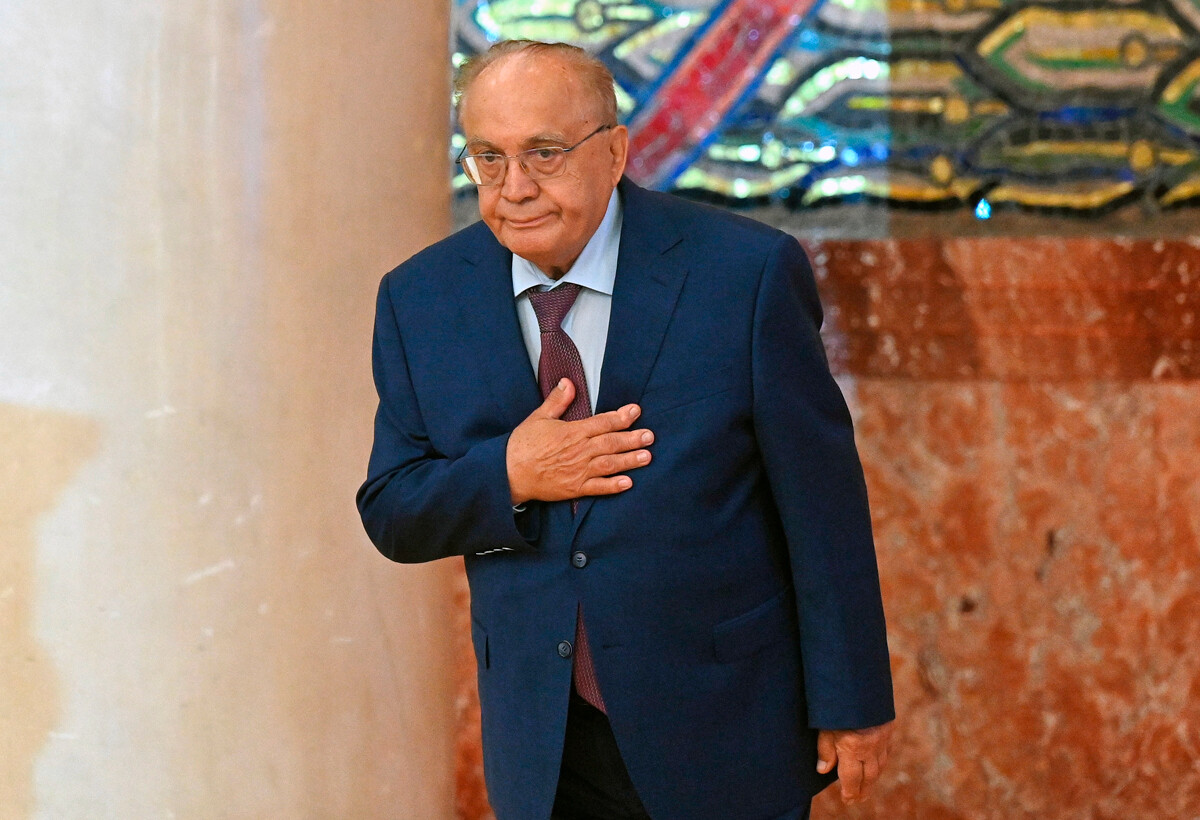
MSU rector Viktor Sadovnichiy greets freshmen
Yevgeny Odinokov/SputnikSince 1992, Viktor Sadovnichiy has served as a longtime rector of the university. He himself graduated in 1963 from the Faculty of Mechanics and Mathematics of MSU (that’s why other faculties’ students are often jealous, because they believe he loves his faculty a bit more than the others and pays more attention to it).
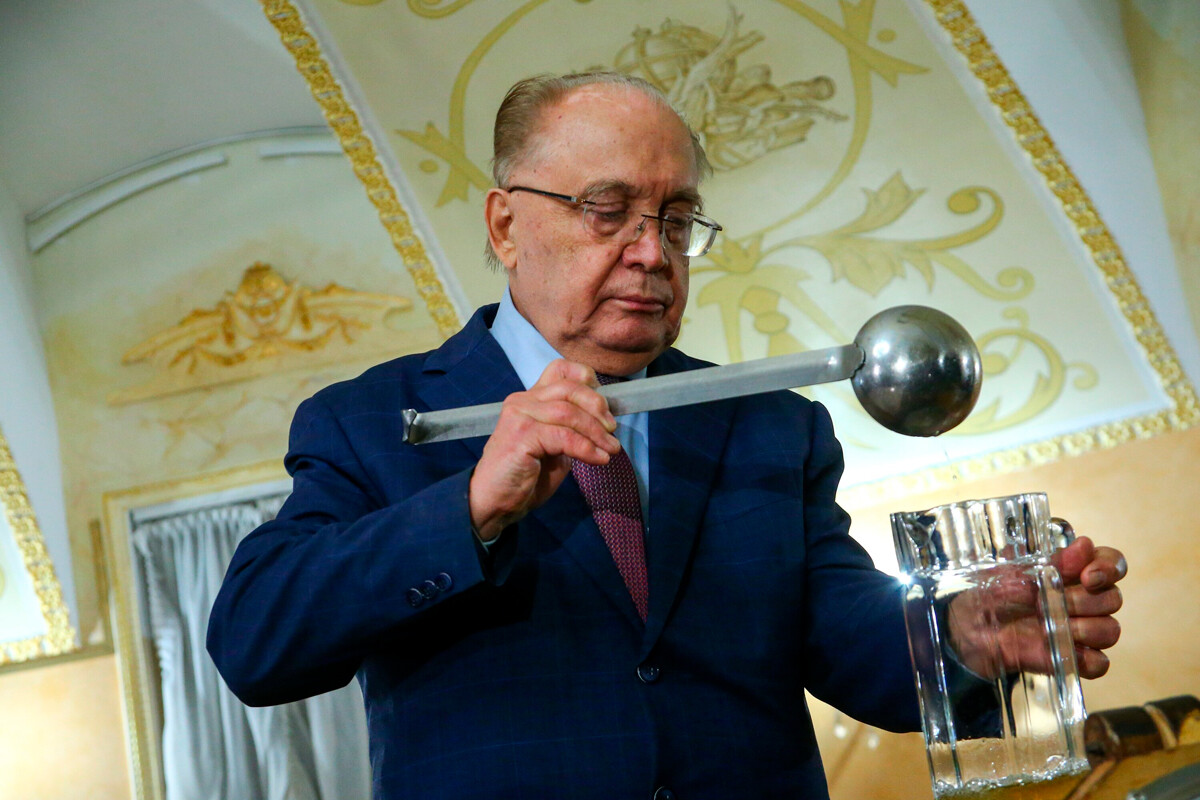
Every year, according to an old tradition, the rector offers students medovukha - a honey-based alcoholic beverage - on MSU’s birthday.
Sergei Vedyashkin/Moskva AgencySadovnichiy also heads the Russian Union of Rectors and has the title of honorary professor at many foreign universities, from the U.S. to Japan. He has a lot of state honors and awards. Aside from that, an asteroid was named after him (‘Sadovnichij’), as well as a type of peony tree (‘Academician Sadovnichiy’).

An MSU student getting ready for classes
Yekaterina Chesnokova/SputnikToday, about 40,000 students attend MSU (almost 4,000 of them are foreign students from 80 countries). It’s simply impossible to count the overall number of graduates of the university for all the years of its existence. Russia Beyond alone has about a dozen graduates (mainly from the Faculty of Journalism)!
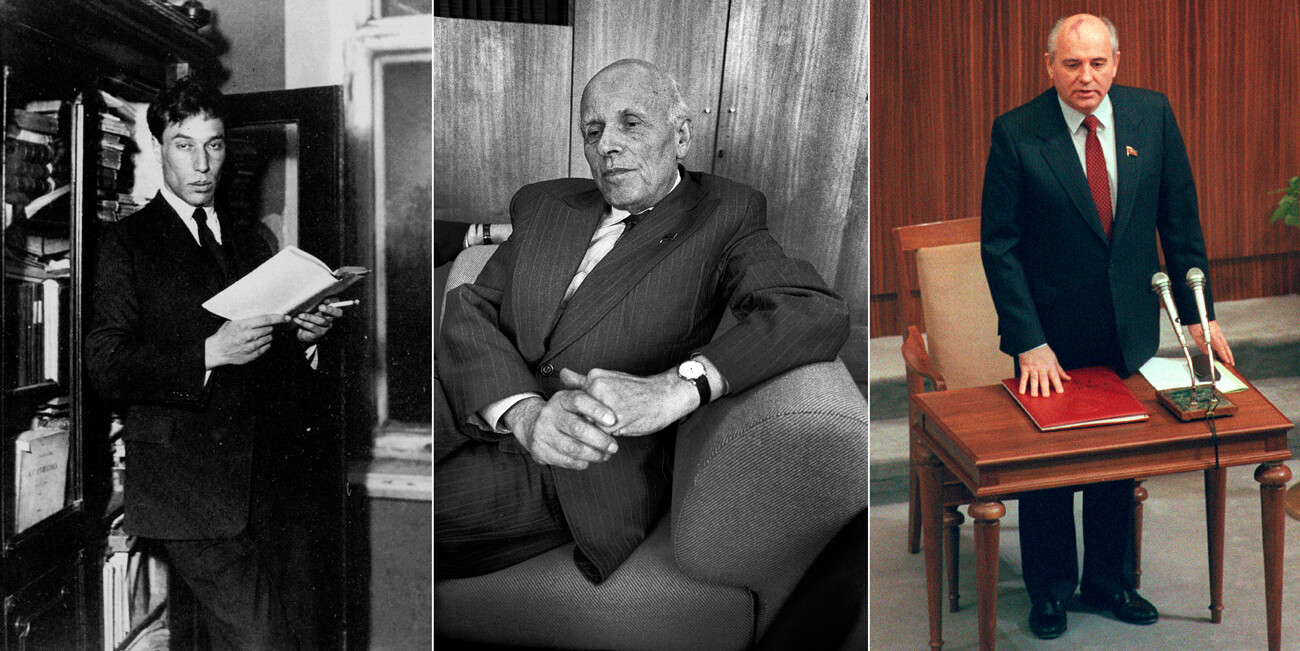
MSU graduates who won the Nobel Prize: Boris Pasternak, Andrei Sakharov, Mikhail Gorbachev
Legion MediaPeople who graduate from MSU become famous politicians, businessmen, sportsmen, writers and journalists – and, of course, outstanding scientists. They received a slew of notable awards, and 11 graduates became Nobel Prize laureates in different fields:
Dear readers,
Our website and social media accounts are under threat of being restricted or banned, due to the current circumstances. So, to keep up with our latest content, simply do the following:
If using any of Russia Beyond's content, partly or in full, always provide an active hyperlink to the original material.
Subscribe
to our newsletter!
Get the week's best stories straight to your inbox